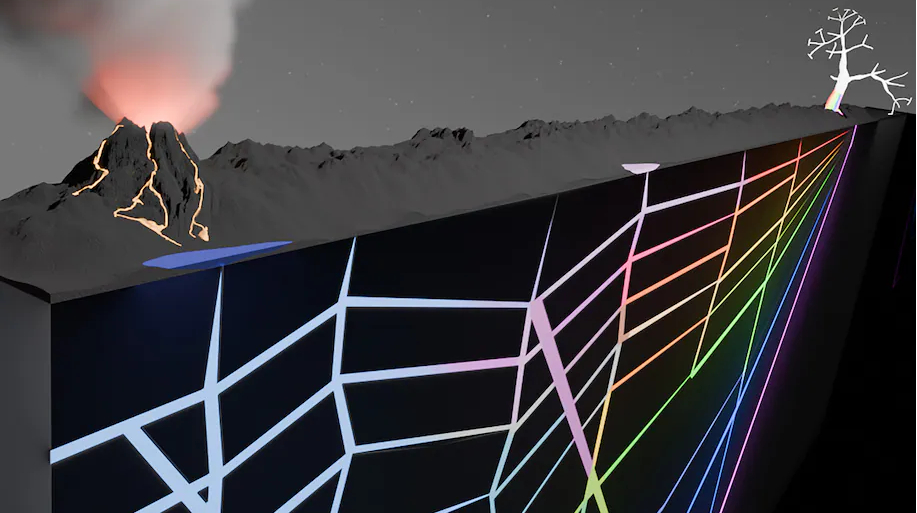How did life originate on Earth? Scientists have recreated the conditions for the formation of the “building blocks” of organisms

An illustration of how heat could flow through underground networks of interconnected geological cracks
Christof B. Mast
Scientists have taken a new step to find out the source of the origin of life on Earth. They conducted an experiment to reproduce the conditions in which biopolymers were formed – the compounds necessary for the creation of a living organism.
This is stated in the study, published in the scientific journal Nature, informs The Washington Post.
In the early 1950s, scientist Stanley Miller conducted a revolutionary experiment in which he tried to recreate the conditions of the early Earth. To the interconnected flasks, he added several simple substances that were believed to be present in the atmosphere and oceans of the young planet.
The scientist heated them and gave them an electric shock, imitating lightning. From this “primordial broth” amino acids appeared – the “building material” for proteins.
In a new experiment, a group of German scientists replaced the bulbs with tiny, branching networks of cracks similar to those that form in rocks. They were created in a tiny piece of inert Teflon-like substance (FEP) that was sandwiched between two sapphire plates.
Scientists let water through the cracks along with chemicals that are key to living organisms. In particular, in one of the experiments, glycine (the simplest amino acid) and trimethylpropane were used.
The researchers then applied heat to the cracks, simulating a process that might occur near hydrothermal vents in the ocean or in porous rocks near a geothermal pool. Without heating, the reactions were very difficult.
Scientists have discovered that heat flowing through geological networks sorts and filters molecules, helping them to create longer chains – biopolymers, which are the “building blocks” for living organisms. In particular, biopolymers include nucleic acids (DNA and RNA), peptides, proteins, carbohydrates and polysaccharides.
According to study co-author Christoph Mast, heat flows in rocks could occur in various geological conditions and were “ubiquitous” on the early Earth.
In the future, scientists plan to create a network of cracks from geological materials and build larger networks of interconnected sections.
We will remind, scientists assumedwhat the Earth might look like if humanity did not exist.











